Do you smell that? Really breathe it in. Get a good, solid whiff of it; that, my friends, is the smell of election season. This year’s contest between Hillary Clinton and Donald Trump has been one of the more…colorful elections in recent history. This presidential election has been making expanded use of digital marketing technology such as email and social media in order to sway potential voters to one side or the other using digital marketing strategy, with the election results hanging in the balance.
In the 2008 presidential election, Barack Obama beat Mitt Romney by roughly 4% in the popular vote. This close margin leads one to believe that the election was a tight race – which it was, to a certain extent. However, Obama did manage to blow past Romney in one key category: social media use.
According to a Google poll, 64% of American internet users thought Obama had better social media usage than Romney. That margin of success, and the Obama campaign’s usage of social media in a time when it was still fairly new in nature, is massive. Social media hadn’t been used in an election like that before, and Obama knocked it out of the park. He made excellent use of the marketing technology at hand and it showed. Fast forward to the current 2016 election; increases in social media and marketing technology usage provide a much closer race.
Surely you’ve seen it if you’ve ventured to Twitter or Facebook: Donald Trump and Hillary Clinton have been incredibly active on social media this election cycle, pushing their messages and slamming the opponent at every turn. Trump, in particular, has been polarizing on social media, capturing mainstream media attention with his tweets, which can be considered a great success on the social media side. They have saturated the channels with their messaging, striving to sway the opposition’s supporters and galvanize their own.
The social media war is fought every day by the two candidates, and with good reason: 24% of US adults have been using social media to get information about the election, which is greater than the candidate’s website visitors and email subscribers combined. Social media allows the candidates to control the message, and therefore frame the narrative, respond immediately when needed, and allow them to constantly be able to engage their audience of potential voters.
Now if the candidates are both using social media to great effect and both can be considered winning at that point, where are they with other digital marketing technology? Where do they stand on email marketing strategy? Who is winning the battle of the inbox? That is a much more interesting topic.
Never Always Tell Me the Odds
The advent of digital technology and digital media strategy has brought an influx of data that is being used in the elections. In the past, data would consist of things like age range, cultural demographics, and income. Nowadays, data isn’t so limited and is more widely used, and once again was brought into the digital limelight by the 2008 Obama campaign. Obama’s campaign used it to identify prospective voters and build a relationship with them; this was a crucial aspect of his team’s digital marketing strategy.
Using analytics tools and monitoring platforms, the campaigns for Hillary Clinton and Donald Trump have been able to learn far more about their target audiences than many politicians who came before them. The data they’ve gathered still includes the old standards, but now encompasses a much more nuanced and defined set of fields and characteristics that is crucial to the targeting, messaging, and delivery for the candidates.
For instance, if the campaign wants to target millennials, they analyze the data and observe that their target audience is most active on mobile platforms, through social media, and during specific hours of the day. They can also look at the type of content the targets enjoy and seek out the most, as well as what they are currently saying on social media platforms. Using this information, a digital marketing strategy for reaching the millennials is created using the data and various channels for the messaging. For example, targeted messaging is sent via mobile devices that resonate best with the millennial audience in order to gain favor with the demographic, all using the data gathered earlier. And that’s just the beginning.
With this information gathered and analyzed, the campaign teams set out to create larger, data-backed digital media campaigns specifically designed to engage their audience. This is huge for the campaigns, as it allows them to make very intelligent plans of attack, which helps when it comes to spending their marketing dollars on a specific group.
Just like Obama did eight years ago, the campaigns for both candidates are using this customized data to hit home with their targeted prospective voters, and growing their influence and loyalties among them. This approach has helped both sides better leverage their marketing dollars and to build stronger relationships with their audiences.
Digital Media Strategy’s Warhorse: Email Marketing
While the social media efforts and their use of data from the two candidates can be considered a wash, their email strategies paint a different picture. Using the Email for President tool by ReturnPath, we are able to look at the current status of each candidate’s email marketing efforts based off of a few key email metrics.

Email List Size
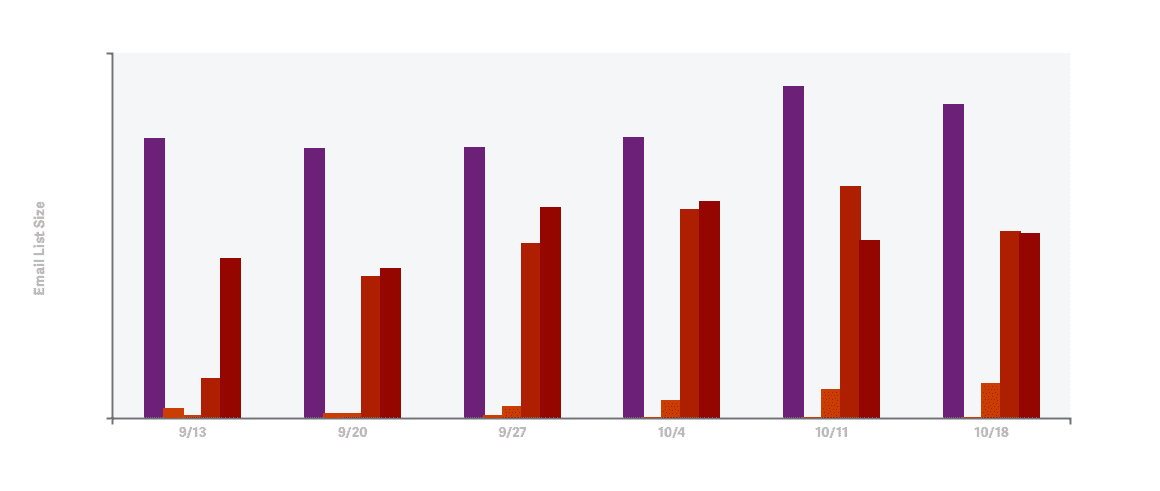
Let’s look at the size of each candidate’s email mailing list:
The first thing that jumps out here is that Clinton has a single (large) mailing list, while Trump has multiple, smaller lists that when combined would give him a larger pool of recipients for his campaign emails to reach.
The composition of these email lists is also an interesting story that goes further than simple marketing, placing greater emphasis on the relationships of the candidates with their respective parties. As discussed on our Email Marketing’s Grave Podcast, the alignment of the email lists for each candidate and their party leadership are not at all equal; Clinton and the DNC have an 80% crossover in their two email lists while Trump and the RNC only have 30% crossover in their lists. Why? This indicates that the DNC has shared their lists with Clinton, while the RNC did not share their email lists with Trump. That alone is jarring and is discussed further on the podcast.
Open Rate & Delete without Opening Rate
The open rates and the delete without open rates are somewhat comparable for both Clinton and Trump:
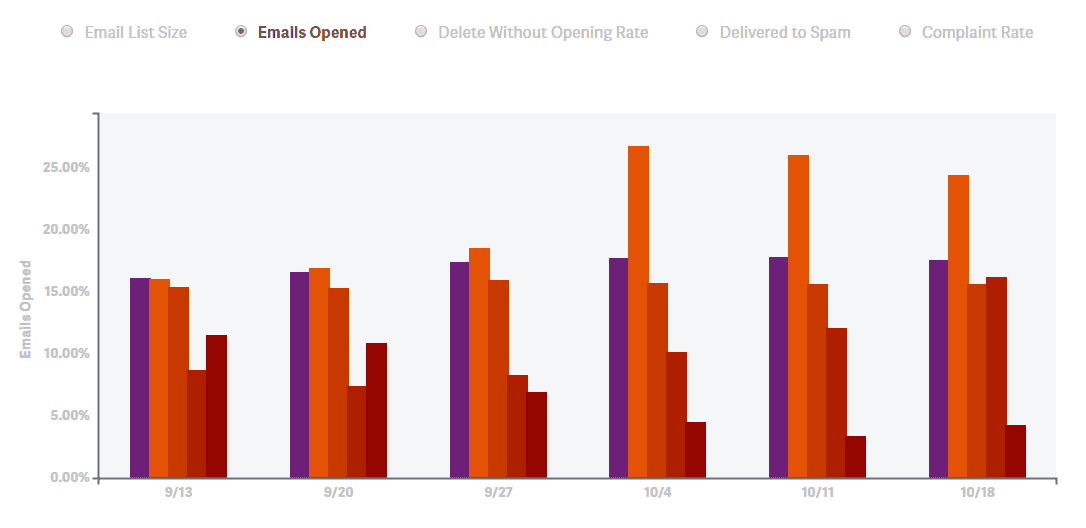
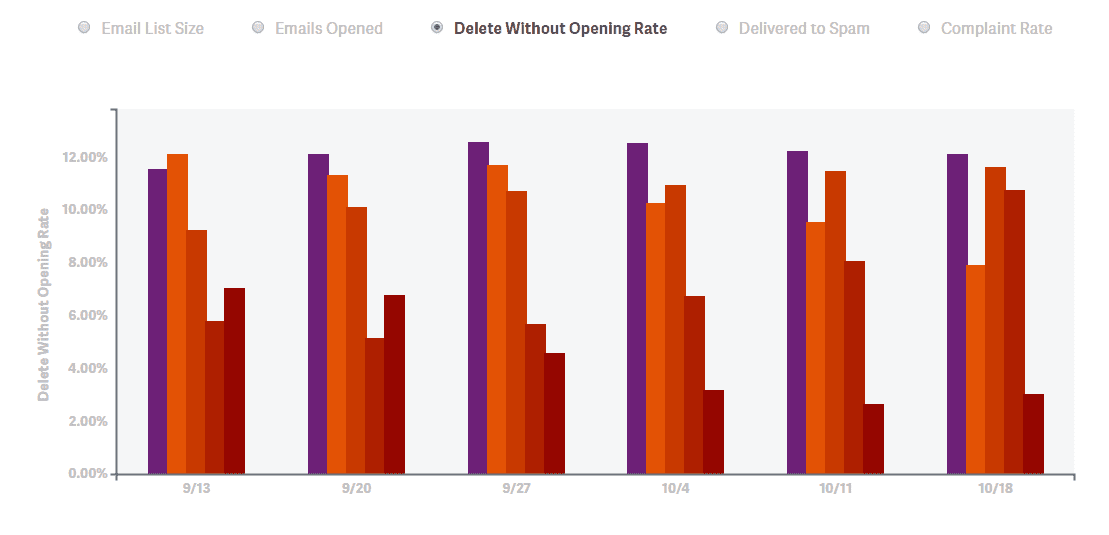
Looking at these graphs, it’s pretty clear that both camps are holding tight with each other on these two facets of their email marketing strategy. The same cannot be said for the next two areas:
Spam & Complaint Rate
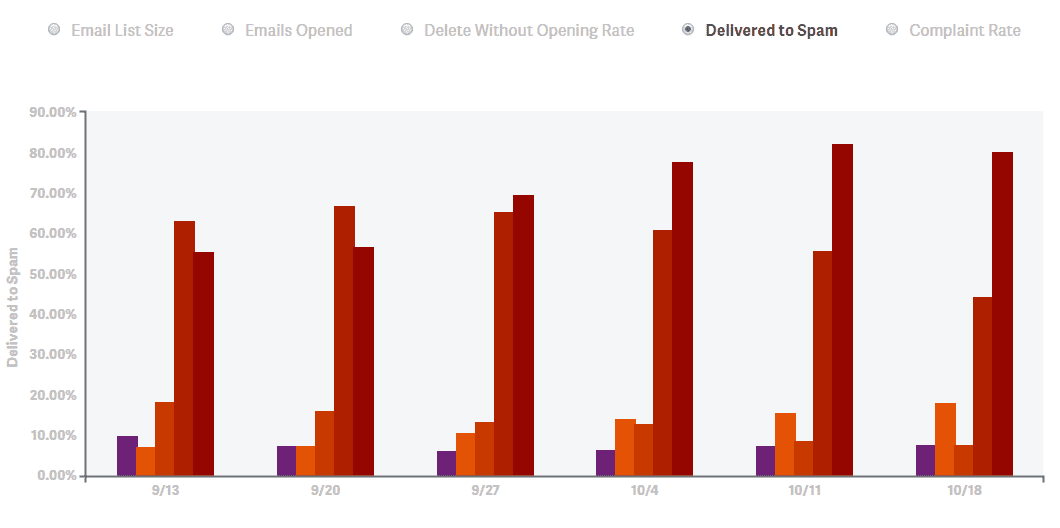
The spam rate…Oh boy…well that’s not exactly great for the Trump email campaign, but on the bright side, it can’t possibly get worse. Now let’s take a look at the complaint rate:
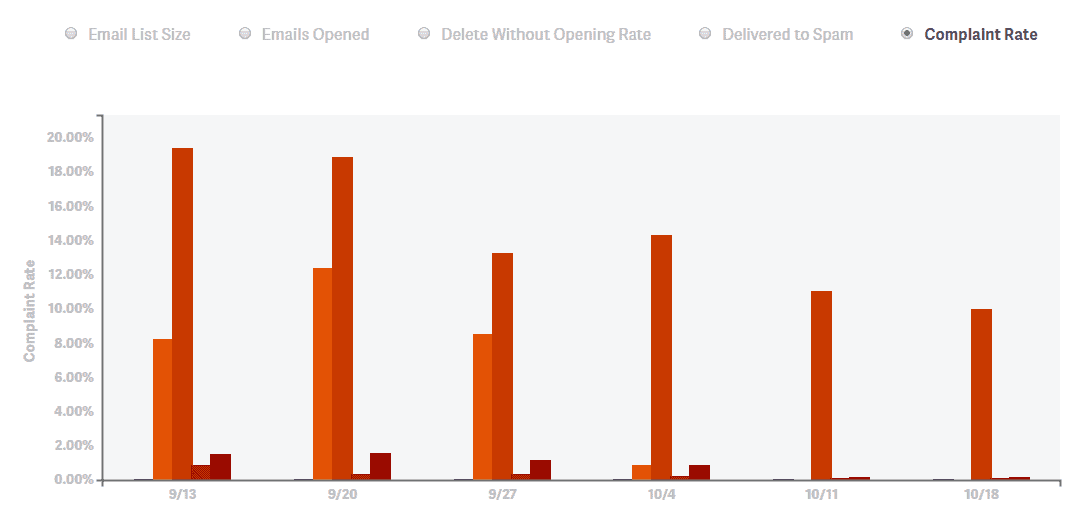
Gulp.
OK, that’s bad. When it comes to spam and complaints for their email practices, the Trump campaign is overwhelmingly in the lead in this negative category, so much so that you can barely even see Clinton’s complaint bar (it is there). These last two categories are potentially the ones that matter the most, as an email program can only truly be effective if it’s healthy and the emails reach the inbox of the recipient (not the spam folder) and if they don’t make people angry when they receive them, effectively meaning your emails are either:
- not reaching your audience, or
- causing complaints if they are read.
Not very good.
The Marketing Tech Impact
With the election getting closer and closer, we begin to get a better understanding of what the outcome might be. Social media, email, and digital marketing efforts and strategy have made elections in recent years much more than simply a cycle of traveling around the country, doing television debates, and waiting for the results. Marketing technology has given us more access to the candidates, their messages, and their news, whether it’s good or bad.
Mastery of marketing technology could actually mean the difference between winning and losing an election; when done correctly, it engages and converts voters, and when done badly, it can definitely repel them. An increased focus on digital marketing has become a feature of political campaigns, and it’s here to stay.
*Note: all of the above data comes from Return Path’s panel data.

